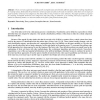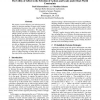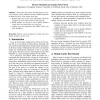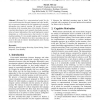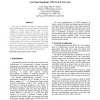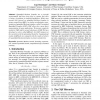110
click to vote
ICAI
2009
14 years 10 months ago
2009
- There are many applications dealing with incomplete data sets that take different approaches to making imputations for missing values. Most tackle the problem for numerical input...
107
click to vote
ICAI
2009
14 years 10 months ago
2009
We present a novel affective goal selection mechanism for decision-making in agents with limited computational resources (e.g., such as robots operating under real-time constraint...
85
Voted
ICAI
2009
14 years 10 months ago
2009
Abstract-- We present and explore the effectiveness of several variations on the All-Moves-As-First (AMAF) heuristic in Monte-Carlo Go. Our results show that:
111
Voted
ICAI
2009
14 years 10 months ago
2009
Motivated by a representational model for the cross-modal interaction between language and other modalities we present a framework for the integration of contextual information int...
ICAI
2009
14 years 10 months ago
2009
- We describe a Web 3.0 interaction system where the mobile user scenario is combined with a touchscreenbased collaborative terminal. Multiple users should be able to easily organi...
142
click to vote
ICAI
2009
14 years 10 months ago
2009
Agents that operate in a real-world environment have to process an abundance of information, which may be ambiguous or noisy. We present a method inspired by cognitive research tha...
93
Voted
ICAI
2009
14 years 10 months ago
2009
ICAI
2009
14 years 10 months ago
2009
88
Voted
ICAI
2009
14 years 10 months ago
2009
The authors extended the idea of training multiple tasks simultaneously on a partially shared feed forward network. A shared input subvector was added to represented common inputs...
110
Voted
ICAI
2009
14 years 10 months ago
2009
Quantified Boolean formulas are a powerful representation that have been used to capture and solve a variety of problems in Artificial Intelligence. While most research has focused...
